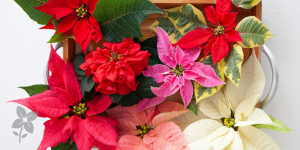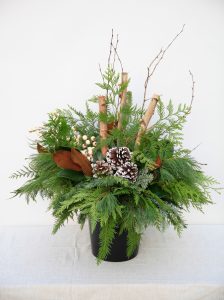
Best Herbs for the Turkey
By Rob Sproule
Fresh is Best
The Top Three
There’s the Rub
“Growing your own food is like printing your own money.”
– Ron Finley
When winter descends and our BBQs freeze shut, our appetites turn to thoughts of comfort food. We dust off the corning ware, fire up the oven and suddenly potatoes are our new best friend. Turkey is the king of comfort foods. It’s so good that we frame entire holiday feasts around it! This article is about an easy way to take that turkey to the next taste level.
Fresh is Best:
With herbs, as with tomatoes and pretty much anything else, home-grown flavour beats store-bought every day of the week. Put some clay pots of woody herbs on the windowsill and you’ll thank yourself come cooking time. There are 2 kinds of herbs: leafy and woody. Leafy herbs are the basil, parsley, and mojito mints of the world: they’re darlings of the summer sun but lose their taste rapidly if you cook them.
Woody herbs were made for comfort food. Their taste is like a secret that you need to unlock with long, slow cooking, then its dense rich flavour infuses through everything around them. That’s why we stuff our foul with sage and put bay leaves in soup: the heat awakens them.
Learn more about cooking with homegrown herbs, with Alberta’s Best Gardening Blog
The Top 3:
Everyone has their own combination of herbs, and you’ll discover your own secret blend. These 3 succulent herbs are a great place to start. Make sure to add all of them at the beginning of the cooking process to give them time to shine:
“¢ Thyme: This fine-leafed Mediterranean native is essential for foul and fish. You can grow regular or Lemon thyme, which will give the meat a subtle lemon flavour (which is probably more apt for salmon than turkey)
“¢ Sage: One of the best healing herbs, sage makes pork, duck, and foul dishes shine. A little goes a long way, so use its leaves sparingly unless you love its distinct taste. You can buy sage with purple or variegated leaves, but original green has the best flavour.
“¢ Rosemary: The king of herbs! It’s spicy, warm flavour pairs well with pretty much any meat (especially red), and the long woody sprigs are a gorgeous garnish. The new growth will have the most flavour, so snip it generously. Don’t forgot to lay some sprigs of it on the side for decoration.
There’s the Rub:
Whatever spices you choose to use for your turkey, here’s the method:
“¢ Pick them fresh leaves off the stems (tedious with Thyme but worth it)
“¢ Mince the leaves very finely, releasing all their aromatic goodness. Combine with oil, salt and pepper in a bowl (or soft butter if you’re not an oil fan)
“¢ Smear the oily goodness all over that bird before cooking. Get in the cavity, under the skin, over the skin, etc. The more the better.
“¢ You want to throw in some garlic too”¦
“¢ As you cook, the herby goodness will infuse into the meat around it.
Whatever your combination, the method is the same. Combine all of your seasonings (any large leaves or whole spices should be well crumbled or ground) until evenly blended. Rub the inside and outside of your raw turkey with oil or melted butter, then rub the seasoning blend over both the inside and outside of the bird. For even better flavour, rub some of the mixture under the skin of the bird, too. Then simply roast as normal.















